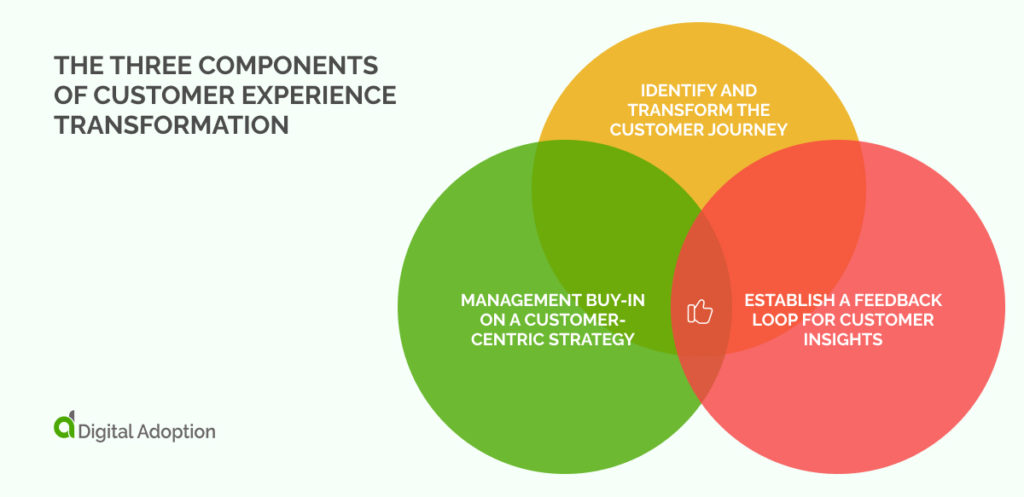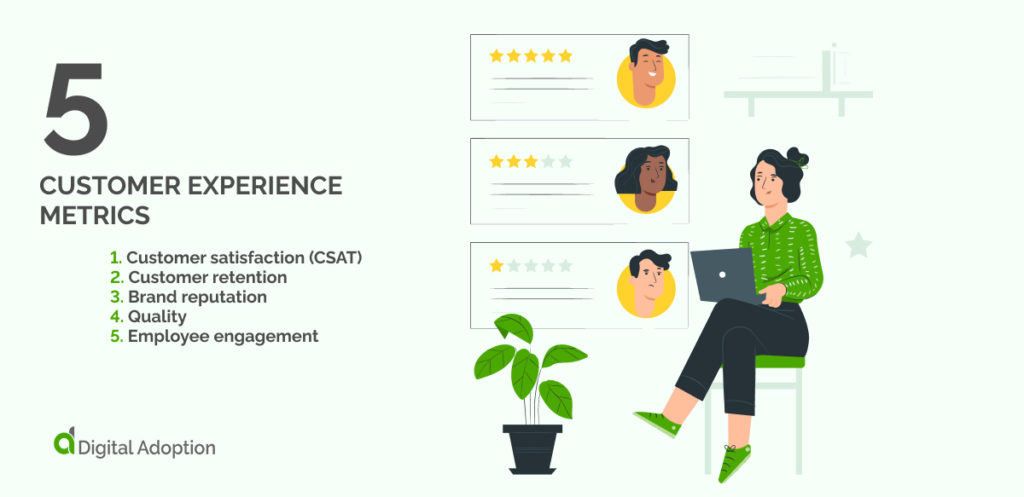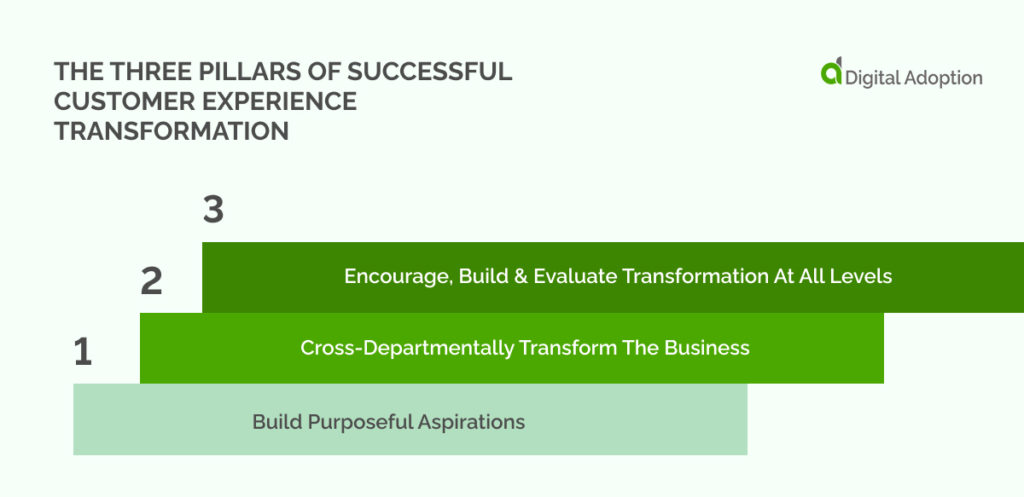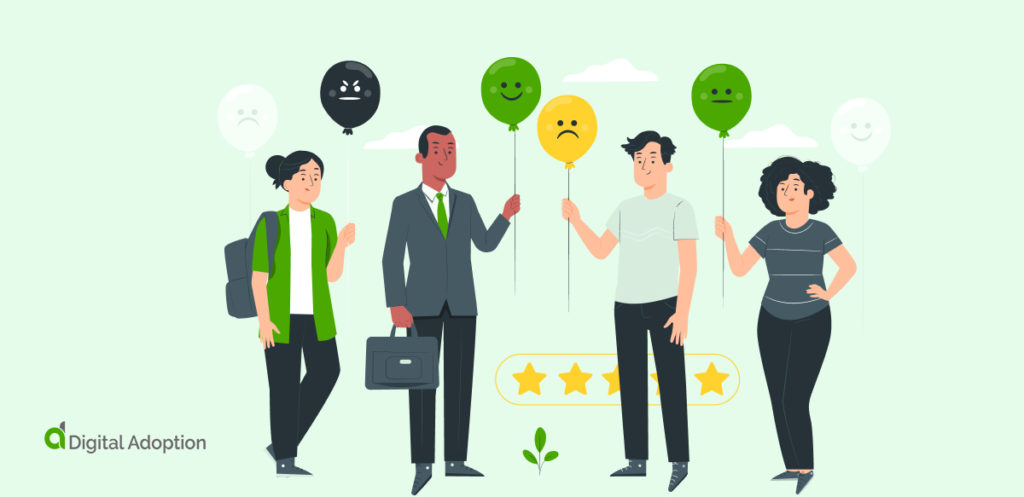Driving Meaningful CX Change for Business Growth
Every company’s purpose is to deliver excellent customer service. But many businesses fail to develop the customer experience over time. As digital technology progresses, new avenues open up for customer interactions.
Customer experience transformation (CX) drives organizational growth by placing the customer first. Businesses must commit to continuous development to achieve longevity and returns on crucial investments. The same goes for customer experience transformation. Companies gain long-term brand recognition and customer loyalty when
Business leaders understand they need to evolve, but they aren’t sure how. In this guide, we cover customer experience transformation. We break down the core components of improving the customer journey, how to measure transformation efforts, and the three pillars required for success.
Here’s everything you need to transform your organization into a customer-centric enterprise.
What Is A Customer Experience Transformation?
A customer experience transformation is a process of improving customer interactions with the business and meeting customer needs. CX transformation is a component of digital transformation. CX leaders help streamline the customer experience through comprehensive change strategies.
Customer experience initiatives align the entire organization to work towards the common goal of prioritizing customers. Addressing customer needs is much different today than it was decades ago. There’s more emphasis on becoming a customer-centric business and finding new ways to create happy customers.
The availability of digital tools has created more tech-savvy customers. To implement change and achieve business success, organizations must evolve. Many organizations struggle to adapt to digital interactions because they’re stuck in the past. Companies must build new capabilities through digital tools to offer more than just in-person or over-the-phone interactions.
Why Is A Holistic Approach Best For Customer Experience Transformation?
Customer experience transformation is a key part of digital transformation. Digital technologies help to increase efficiency across all business areas, especially those impacting customers. These are the building blocks of the CX transformation initiative.
Business leaders must approach transformation holistically to improve the customer experience in the digital age. Employees, senior management, customer support staff, and executives must contribute to improving the customer experience. To improve the customer experience, a business must first understand the customer journey.
Gartner surveyed over 300 global CX practitioners to discover the best practices for CX transformation. A key takeaway from their research was that ‘Organizations that develop end-to-end journey maps improve cross-functional collaboration and CX success.’ Their survey highlights the importance of understanding the customer journey.
The Three Components of Customer Experience Transformation

Maintaining the attention of customers in a digital world can be difficult. Customers interact with many businesses a day through multiple channels. Leaving an impression makes all the difference. The best way to make customers remember your company is to enhance the customer experience.
Here are three major components of CX transformation that will accelerate your organization’s transformation efforts.
Management Buy-in On A Customer-Centric Strategy
Executive buy-in is crucial to any transformation strategy, especially customer experience transformation. CX managers must communicate the benefits of improving the customer experience. After obtaining executive buy-in, the entire organization can rally behind the process and help to increase the customer satisfaction score.
Identify And Transform the Customer Journey
Identifying the current state of the customer journey is an essential part of customer experience management. CX transformation is about understanding the customer’s perspective when interacting with your business.
Is the customer journey as good as it can be? Could elements of the customer experience benefit from multiple digital channels? CX managers must consider the entire journey.
Establish A Feedback Loop for Customer Insights
Establishing a feedback loop enables your business to understand customer behavior and make relevant adjustments to the customer journey—every business benefits from a better understanding of customer experiences. The best way to do this is to ask the customers.
Set up a mechanism to gather customer feedback and use that data to improve customer relationships with your business. Customer insights can enable a business to perform predictive analytics and meet customer needs more effectively.
How To Start A Customer Experience Transformation
It can be challenging to know where to start with customer experience transformation. The first step is to understand how customer experiences intersect with business processes. Improving internal processes and developing existing systems will directly impact customer experiences.
Technical infrastructure and digital transformation are the building blocks of CX transformation. Customer experience leaders consider customer experience transformation as a component of digital transformation. A company’s technical capabilities often determine how effectively it can serve customers.
An excellent starting point for a customer experience initiative is customer insights. Understand how customers feel about the services your business offers. Conduct surveys and data analytics to gather valuable insights, considering how digital transformation impacts the customer journey.
How To Measure A Customer Experience Transformation
Customer retention, satisfaction, and loyalty are key metrics that help identify inherent inefficiencies of the customer experience. These metrics are the building blocks of CX transformation and guide a company’s transformation efforts.
It’s important to share customer experience metrics across the organization. Metrics track progress and provide useful data for the c-suite, stakeholders, and key decision-makers to drive growth.
Metrics are also crucial to enhancing the employee experience. Employees on the front lines, such as customer support staff, can use customer data to improve their interactions. Also, improving employee performance, in general, has an impact on organizational effectiveness, which eventually affects the customer experience.
Business leaders must leverage data effectively to drive change. This means presenting a consolidated view of all metrics to executives. For example, a consolidated view might contain CSAT, customer retention, and quality metrics. This data allows businesses to focus on the right areas to create the most change.
5 Customer Experience Metrics

Every organization collects data on customer behavior, but leveraging customer data is a different challenge. The first step to understanding customer insights is to know where to look. Here are five key metrics to consider when developing a CX transformation strategy.
1. Customer satisfaction (CSAT)
The most common customer experience metric is customer satisfaction. A company can measure CSAT by conducting surveys, monitoring reviews, or mystery shopping scores. The best companies align business goals with CSAT ratings to meet customer needs.
2. Customer retention
Gauging customer retention helps understand what makes customers leave an organization. Analyzing big data points across years of customer experiences can highlight recurring issues and enable more effective problem-solving.
3. Brand reputation
Company reputation metrics determine how customers feel about a brand. Many customers continue using services they don’t enjoy because they don’t want to go through the hassle of changing to a new company. So customer retention alone often isn’t enough. Understanding customers’ feelings through brand reputation data allow a company to expand beyond its initial customer profiles.
4. Quality
Most companies neglect product or service quality metrics. Offering an enhanced customer experience requires a preemptive approach. Companies must assess the quality of their offering to understand how they can improve. Customers flock to other brands if a product doesn’t meet customer requirements.
5. Employee engagement
The most undervalued customer experience metric is employee engagement. The impact of employee performance trickles down to the customer experience. Increasing employee engagement requires training and support on new systems and products so employees know exactly how to meet customer requirements.
The Three Pillars Of Successful Customer Experience Transformation

CX leaders must understand the three building blocks of a customer experience transformation to guide meaningful organizational change. These pillars focus on aligning all business areas, encouraging collaboration, and setting a clear vision for the future of the business.
Build Purposeful Aspirations
The first step involves creating a vision of the experience the business plans to offer customers. It’s important to ensure the vision is specific and aligns with the company’s purpose. Outlining a purposeful vision builds enthusiasm throughout the enterprise, engages employees in the change initiative, accelerates change, and clarifies how transformation adds value to the business.
Communicate the vision clearly to employees and executives. A comprehensive vision consists of significant technology investments, key metrics, employee expectations, and a list of new processes. Outlining the vision early in the transformation process makes it much easier to get everyone on board. Employees feel included in a shared vision and can focus on contributing to change.
Businesses can build more meaningful aspirations using customer data insights. Actionable insights help to shape the company’s vision and encourage change across different departments. Employees across the enterprise can strive to create a positive service culture.
Cross-Departmentally Transform The Business
Companies often fail to allocate enough resources to dedicated teams to tackle customer experience transformation. Companies must share key data insights across cross-functional teams and foster collaboration throughout the organization.
Business leaders must learn to target the right areas during transformation. CX transformation involves improving processes, employee performance, and products. Once the transformation process begins, companies must consistently measure and evaluate progress. Collecting feedback from employees and customers allows the business to make necessary adjustments.
CX leaders design a CX transformation strategy with organizational structure in mind. A top-down approach often fails to generate the desired results. CX managers must cross-departmentally transform the business to maximize results. This means allocating resources to the appropriate teams, seeking the right talent, and delegating projects to trusted management throughout the business.
Encourage, Build & Evaluate Transformation At All Levels
Companies often fail to meet customer expectations because they don’t regularly assess the customer experience. The key to customer loyalty is continuous improvement. Beyond creating CX transformation roadmaps, companies must engage all business areas in change at once.
Encouraging enterprise-wide change requires a strategic and holistic approach. Obtain executive buy-in, support employees throughout the process, and inform customers about new changes. CX transformation success depends on effective communication. Business leaders are responsible for encouraging collaboration toward a common goal.
An essential part of CX transformation is agility. CX leaders influence change by creating a company culture that values change, customer-centricity, and continuous improvement. This attitude should carry through to processes, products, and services to ensure customers get the most out of interactions.
Achieving Customer Satisfaction in the Digital Age
Customers are familiar with seamless self-service experiences across other areas of e-commerce, such as online shopping. They expect every business they interact with to offer a similar service.
McKinsey’s recent research on the digital reinvention of enterprise tech go-to-market shows that ‘more than 30 percent of B2B customers are already using digital and self-serving channels for each stage of the buying journey.’
Maintaining a competitive advantage in a digital world means constantly looking toward the future of business operations. Successful businesses embrace digital technology such as automation tools, machine learning, and artificial intelligence to streamline the customer journey.
For example, machine learning uses customer data insights to automate aspects of customer interactions. It enables companies to utilize digital platforms more effectively, reducing the workload on front-line employees.
The best way to meet customer needs is to increase your organization’s agility. Being able to adapt to evolving customer demands is more important than ever. Businesses can only achieve this level of future insight by embracing digital and customer experience transformation.















